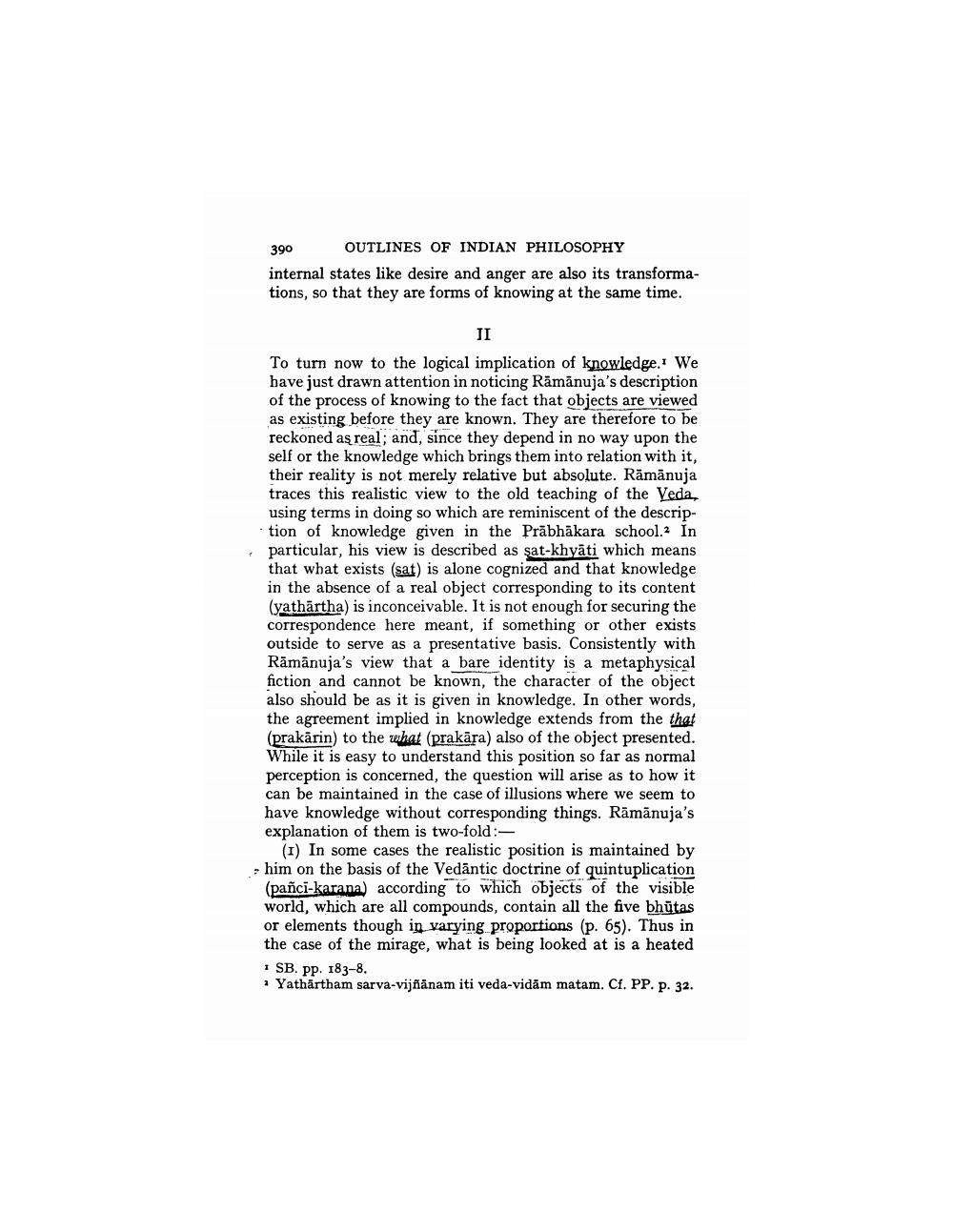________________
7
390
OUTLINES OF INDIAN PHILOSOPHY
internal states like desire and anger are also its transformations, so that they are forms of knowing at the same time.
II
To turn now to the logical implication of knowledge. We have just drawn attention in noticing Rāmānuja's description of the process of knowing to the fact that objects are viewed as existing before they are known. They are therefore to be reckoned as real; and, since they depend in no way upon the self or the knowledge which brings them into relation with it, their reality is not merely relative but absolute. Rāmānuja traces this realistic view to the old teaching of the Veda, using terms in doing so which are reminiscent of the description of knowledge given in the Prābhākara school. În particular, his view is described as sat-khyāti which means that what exists (sat) is alone cognized and that knowledge in the absence of a real object corresponding to its content (yathartha) is inconceivable. It is not enough for securing the correspondence here meant, if something or other exists outside to serve as a presentative basis. Consistently with Ramanuja's view that a bare identity is a metaphysical fiction and cannot be known, the character of the object also should be as it is given in knowledge. In other words, the agreement implied in knowledge extends from the that (prakarin) to the what (prakara) also of the object presented. While it is easy to understand this position so far as normal perception is concerned, the question will arise as to how it can be maintained in the case of illusions where we seem to have knowledge without corresponding things. Ramanuja's explanation of them is two-fold:
(1) In some cases the realistic position is maintained by him on the basis of the Vedantic doctrine of quintuplication (pañci-karana) according to which objects of the visible world, which are all compounds, contain all the five bhūtas or elements though in varying proportions (p. 65). Thus in the case of the mirage, what is being looked at is a heated 1 SB. pp. 183-8.
Yathartham sarva-vijñānam iti veda-vidām matam. Cf. PP. p. 32.




